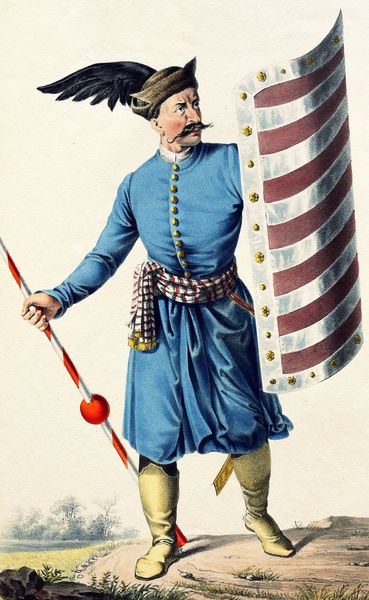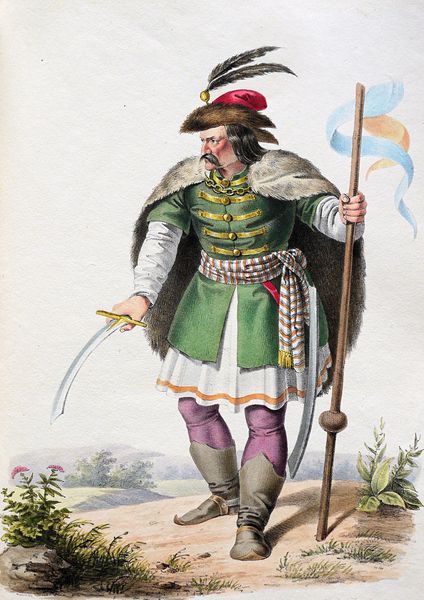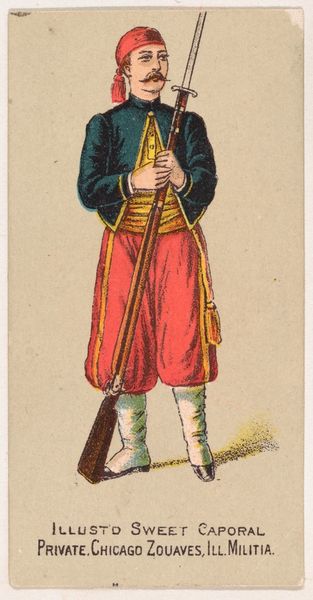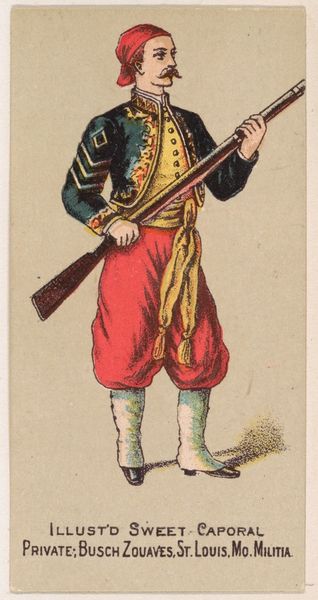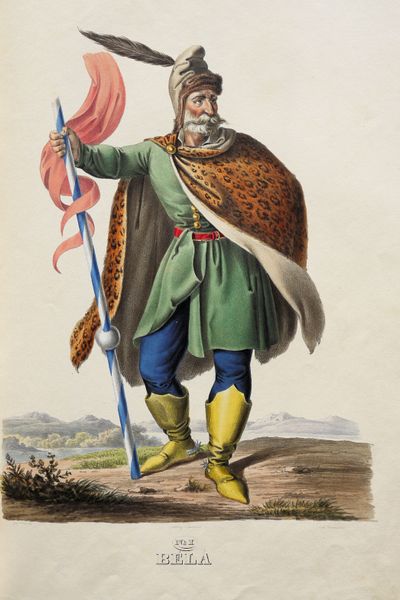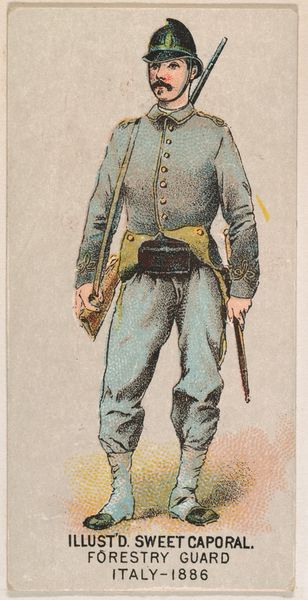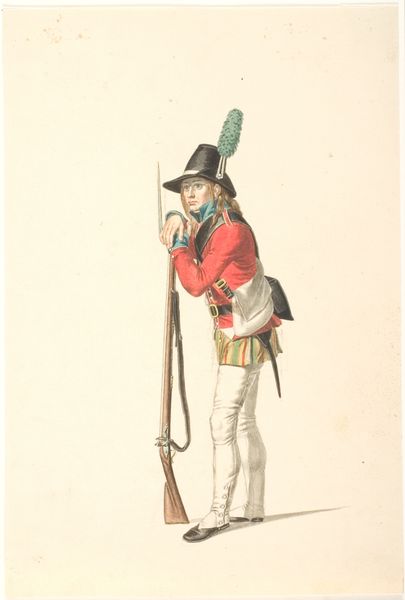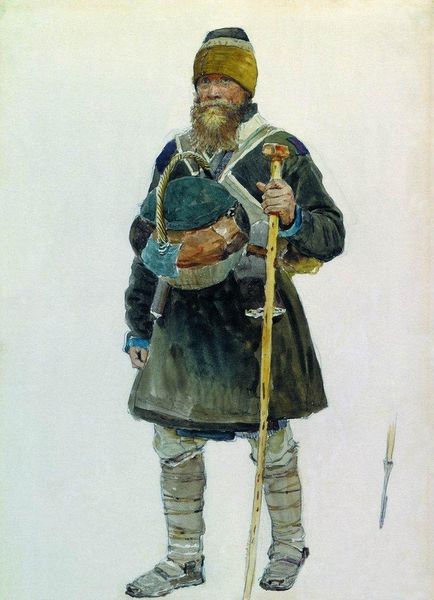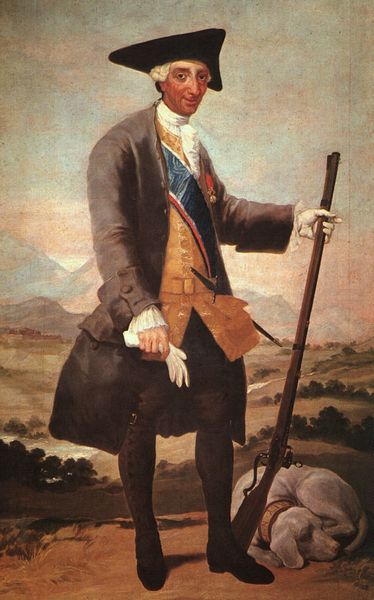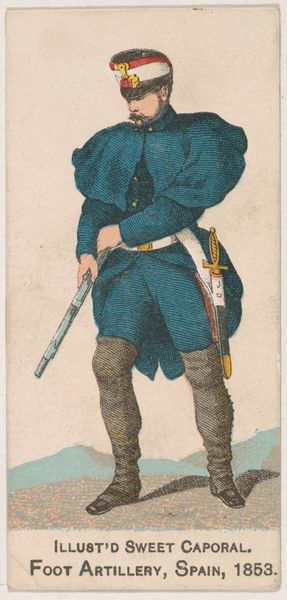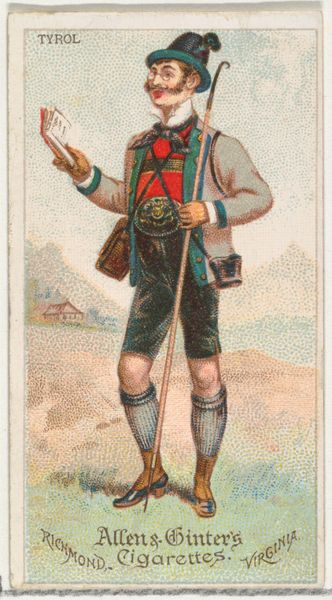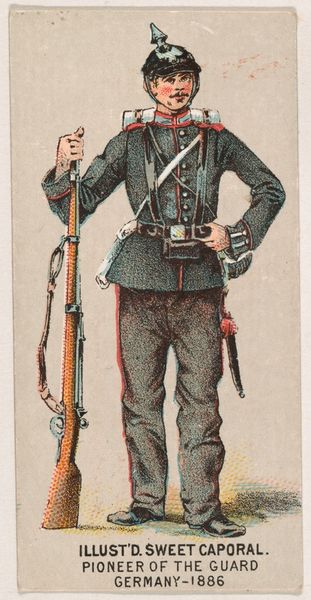
watercolor
#
portrait
#
oil painting
#
watercolor
#
portrait reference
#
romanticism
#
genre-painting
#
portrait art
Copyright: Public domain
Editor: We are looking at "Geza," a watercolor created in 1828 by Josef Kriehuber. What strikes you first about it? Curator: The composition. It presents an archetypal image, rigid and almost performative in its stillness, offset by soft Romanticist color. The figure, positioned frontally, becomes a study in restrained yet controlled self-representation. Editor: Indeed. Thinking about Kriehuber’s process, I'm fascinated by the layering visible in the rendering of the figure’s garments. The blues of his tunic, for example, suggest a manipulation of the watercolor to give depth where you might not expect it. Curator: The color choices strike me, too. Notice how Kriehuber juxtaposes the rustic earth tones with that unusual bright pink in the stockings? The colors operate in concert, playing the earthy reality of his labor with, let's say, the decorative expectation of his social position. Editor: Agreed. He does this without ignoring texture; consider the details of the fur hat, the gleam on the sword. These are the products of materials—where they come from, who crafts them. Was this depiction aimed to ennoble the figure, perhaps? Curator: One reads a distinct symbolic purpose within its formal elements. It’s a celebration of the subject rendered legible through artistic devices, while still holding space for inherent mystery. What purpose might that standard serve, fluttering in the painted breeze? Editor: I suppose if we investigate its social circumstances, these aren’t mere embellishments. The quality of the sword, the cut of the cloth: these would have real material meaning and value. Curator: Yes, there's an interaction happening between form and intended symbolic function. We're led by the painting’s structures to a narrative, but the openness of the composition resists any reductive meaning. Editor: Thinking about what is represented, along with how it's achieved gives me new appreciation for watercolor portraiture of this era. Curator: The dialectic is quite revealing. Thanks for pointing that out.
Comments
No comments
Be the first to comment and join the conversation on the ultimate creative platform.
